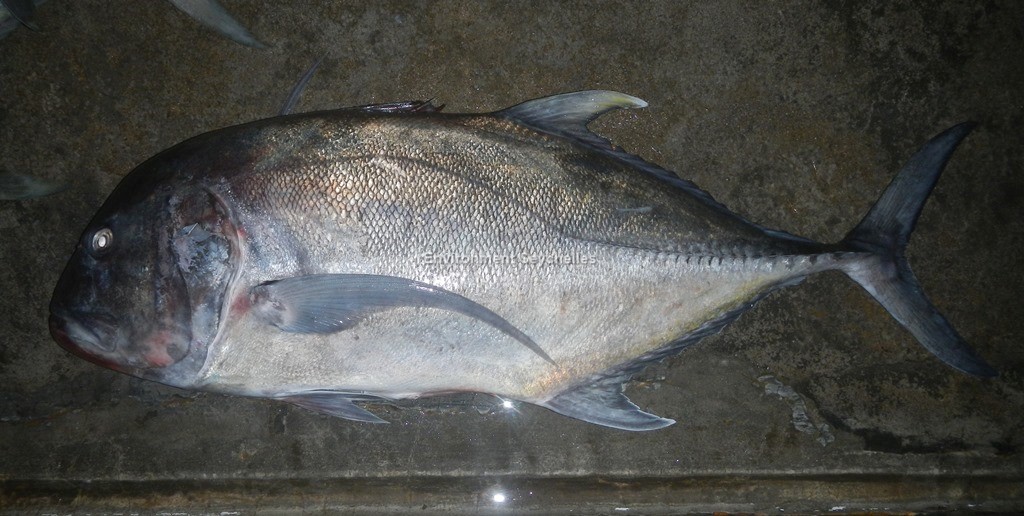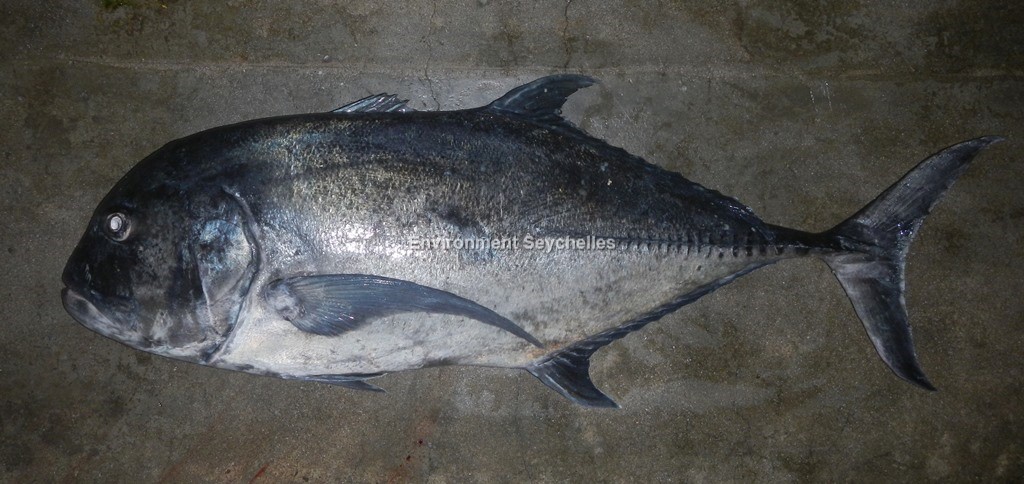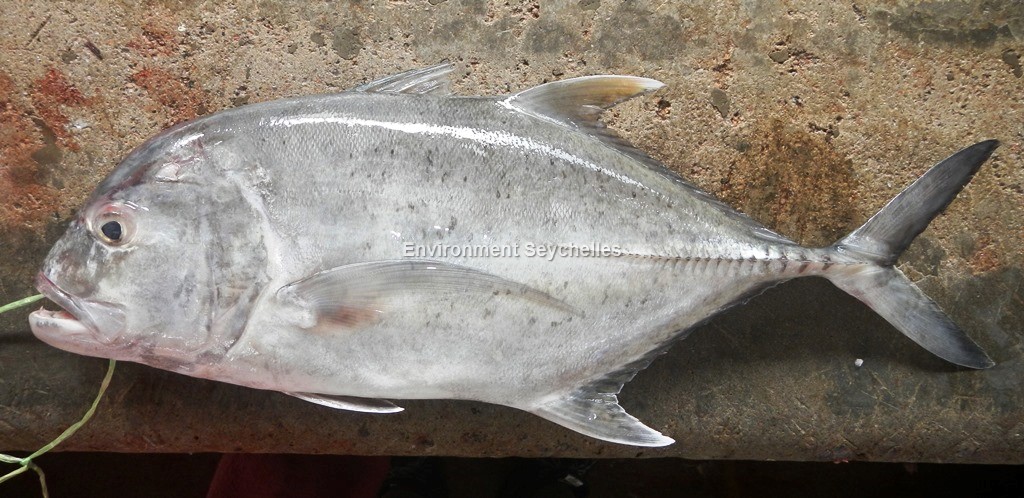Description:
Dorsal spines: 9; Dorsal rays: 18-21; Anal spines: 3; Anal rays: 15-17.
Body oblong, compressed; dorsal profile strongly convex anteriorly, ventral profile only slightly convex. Adipose eyelid moderately developed, small anteriorly, posterior
adipose eyelid extends onto eye to rear border of pupil. Upper jaw with outer row of strong canines widely spaced in adults, and an inner band of small villiform teeth.
Lower jaw with a single row of strong conical teeth widely spaced in adults. Breast naked ventrally, with a small to large patch of prepelvic scales.
Colour: adults silvery grey or dusky golden to black above, usually paler below. No dark spot on upper margin of opercle. Fins usually uniformly grey to black, except
leading edge and tips of dorsal and anal fin lobes paler. Mature males usually darker than females, sometimes head and fins completely black. Juveniles and young adults
generally with more silvery bodies and paler fins.
Size:
Maturity: Lm 65cm FL. Range unknown. Max Length: 170cm TL. Commonly 100cm TL.
Habitat and Ecology:
Pelagic and occurs in many marine habitats including rock, coral reef channels, inner reefs, inshore sand flats, and seaward reefs, moving further offshore as they grow
(depth 10-188m). Juveniles occur in small schools over sandy inshore bottoms and occasionally in turbid estuaries. Feeds during the day, mostly on demersal and pelagic fishes.
Also consumes crustaceans (like crabs and spiny lobsters) and cephalopods. One specimen famously filmed in Seychelles waters attempting to predate a low flying sea bird.
Adults solitary or in schools. Forms spawning aggregations which have been observed on shallow seaward reefs and offshore banks.
Fishery Status:
This species is not protected or subject to fishery regulations. It is caught in the hand line fishery where it is a regular but not numerous component of the catch.
Notes:
References:
Bray, D.J. (2019). Caranx ignobilis in Fishes of Australia, http://fishesofaustralia.net.au/home/species/4268 (19/05/19)
Fischer, W. & G. Bianchi (eds), (1984). FAO species identification sheets for fishery purposes. Western Indian Ocean; (Fishing Area 51). Prepared and printed with the
support of the Danish International Development Agency (DANIDA). Rome, Food nd Agricultural Organization of the United Nations, vols 1-6: pag. var.
Froese, R. & D. Pauly. Eds. (2019). FishBase. https://www.fishbase.se/summary/Caranx-ignobilis (18/05/19).
Smith-Vaniz, W.F. & Williams, I. (2016). Caranx ignobilis (errata version 2017). The IUCN Red List 2016: http://dx.doi.org/10.2305/IUCN.UK.2016-3.RLTS.T20430651A47552431.en. (18/05/19).
Citation:
Nevill, J.E.G. (2019). Caranx ignobilis, Giant trevally. Seychelles Seatizens. www.seatizens.sc. https://seatizens.sc/species/caranx-ignobilis-forsskal-1775/ (edited 23/06/22).




There are no comments